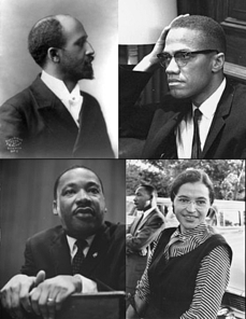
Following the abolishment of slavery in the 1860's, black people remained to be treated differently throughout the 20th century. Schools, transportation and restaurants were segregated, ghettos were formed in the northern cities and groups such as the Klu Klux Klan harassed and murdered blacks. This era of segregation separated blacks from whites socially, politically, and economically consequently, beating down a race. In 1954, the Supreme Court ruled to desegregate schools and later parks, public housing, air terminals, buses etc. The Civil Rights Bill was first proposed by President Lyndon B. Johnson an American President in support of black peoples rights. Also, the issuing of the Voting Rights Act, which outlawed literacy tests for African Americans was too, driven by the president. The 1960's was a time of counterculture where, driven by hope given by John F. Kennedy, black activists such as Rosa Parks, Muhammad Ali, Malcolm X, Martin Luther King, Race Riots and the Black Panther Party drew attention to the need for change and the end of segregation. In the year 1900, only one of the worlds countries permitted women the right to vote. By 1975 however, 129 countries had too, permitted this right for women. However, women were not treated equally in the work force which is an ongoing conflict to this day. Figureheads such as Margaret Thatcher, the first woman elected head of state in Europe and Indira Gandhi, the first Female president in India helped equalize women's rights as their influence was not ignored. By the late 1960's almost all women had access to birth control. This meant that women could have a say in when they wanted to have children, therefore allowing them to pursue their careers and further bring them closer in equality to men. They gained the right of choice. After gaining the right to vote, the issue of equal pay arose and because women still didn't receive the same level of pay as men did, the solution resulted in more women entering into politics.
 RSS Feed
RSS Feed